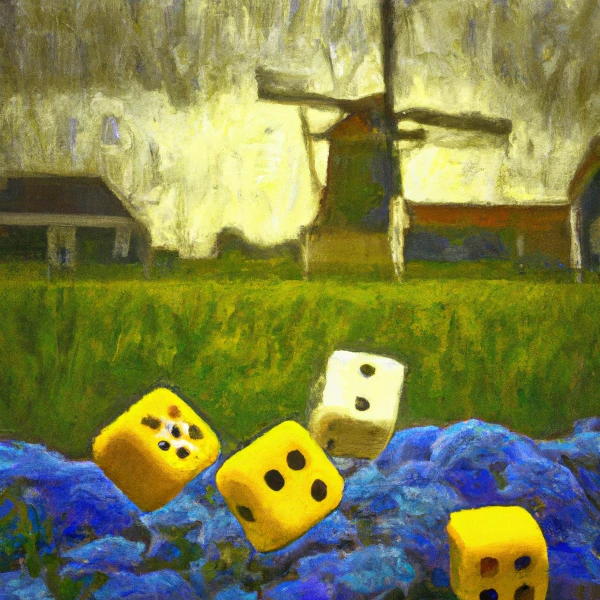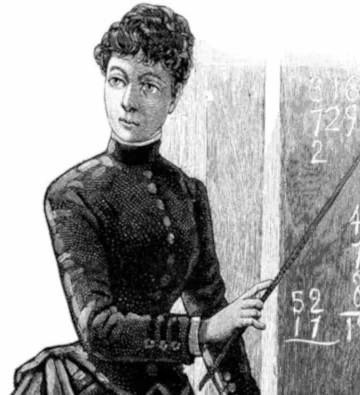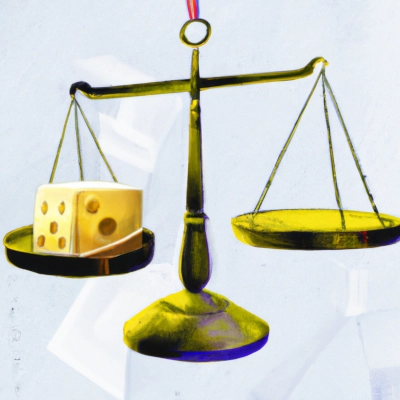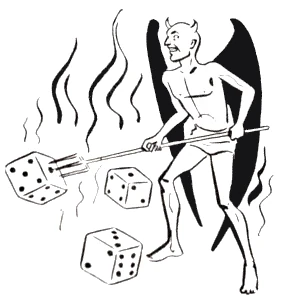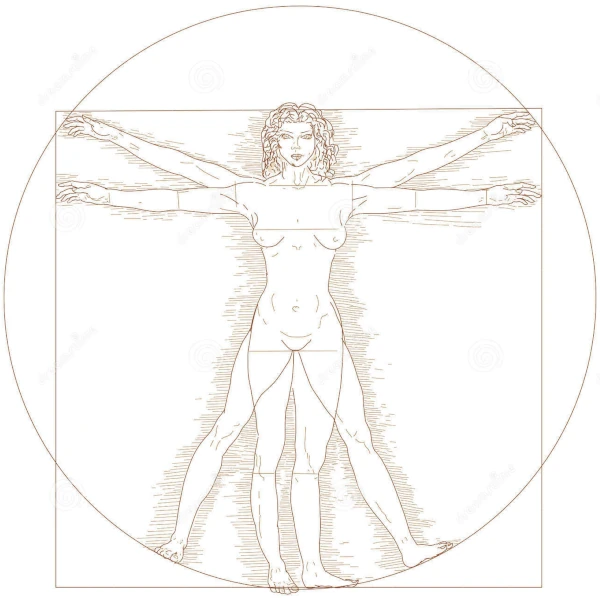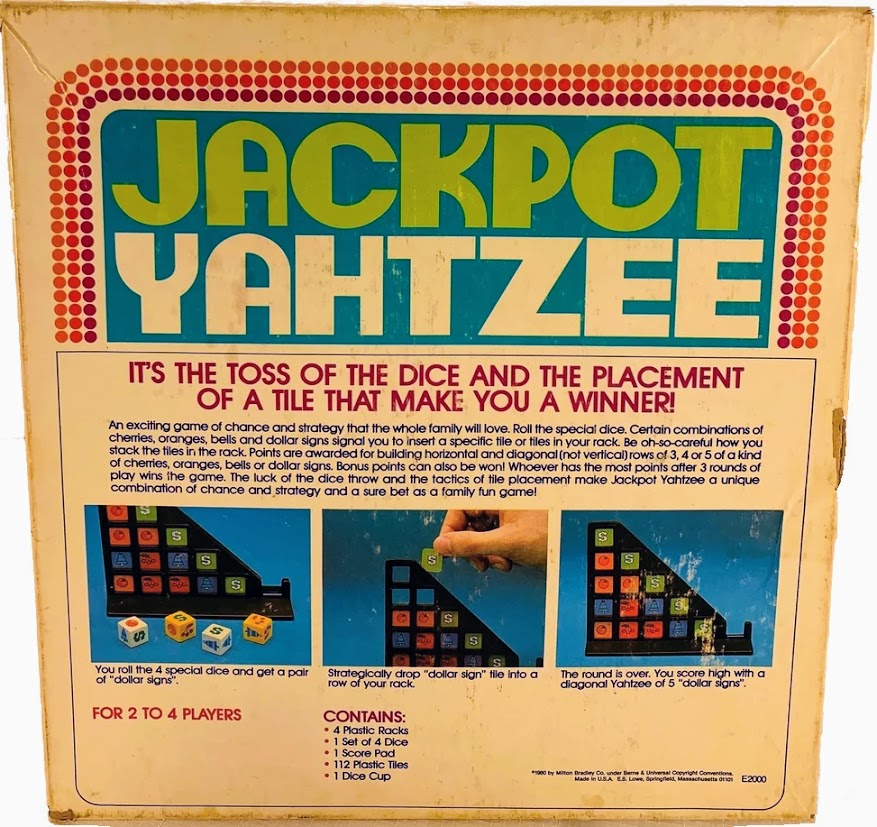Yahtzee Rules
Learn how to play Yahtzee with our comprehensive guide to Yahtzee rules. Download Yahtzee rules PDF files for future reference or delve deeper into the game's regulations and etiquette with our House Rules overview and Yahtzee FAQ. Yahtzee rules at a glance:
- Roll five dice up to three times per turn to form scoring combinations.
- Fill out the score card - Upper Section with sets of same dice value, Lower Section with other combinations.
- Strategize which dice rolls to score each turn to maximize your total score over 13 rounds.
- A Yahtzee (five-of-a-kind) is the highest scoring roll.

Yahtzee Game Rules

Yahtzee is a classic dice game that combines luck, strategy, and decision-making in a perfect blend of entertainment. First introduced in 1956 by game entrepreneur Edwin S. Lowe, Yahtzee has become one of the world's most popular dice games with millions of players worldwide. Whether you're playing with family during game night or competing in serious tournaments, understanding the Yahtzee rules is essential for success.
The Basics of Yahtzee Rules
Yahtzee is played with five six-sided dice and a specialized scorecard. The game consists of 13 rounds where players take turns rolling dice to create specific combinations that earn different point values. The goal is simple: score the highest total by the end of all 13 rounds. Each round gives you up to three rolls to create the best possible combination before recording your score in one of the 13 scoring categories. Once a category is used, it cannot be used again.
For a deeper understanding of official Yahtzee rules, download one of our authentic PDF rulebooks below from different eras of the game's history.

Official Yahtzee Rules (PDF)
How do you play Yahtzee? Are you a beginner just learning the Yahtzee rules? Did your dog eat the official Yahtzee rules book that was included in your set? Has it been lost beneath the sands of time? Or you are simply playing with a minimalist homemade set of five dice and a pencil? If you need to brush up on the basics or learn how to play Yahtzee completely, we've got you covered. Download Yahtzee rules and come to the table prepared.

Other Yahtzee Rules (PDF)
Yahtzee has evolved beyond the standard game, with numerous variant games developed over the years. While resembling the original version, mastering these variants requires understanding their official Yahtzee rules. Some variants like Triple Yahtzee stay close to the classic rules, while others like Casino Yahtzee and Showdown Yahtzee introduce entirely new mechanics. Explore the official Yahtzee rules for these lesser-known games and discover new delicious flavors of the beloved classic.

International Yahtzee Rules (PDF)
While some say love is the international language, researchers at the World Yahtzee Institute have uncovered new evidence that suggests it's Yahtzee. This game transcends age, culture, and language barriers. To make Yahtzee even more accessible globally, the official Yahtzee rules are available in PDF format in multiple languages. Players worldwide can now download Yahtzee rules in their native tongue, whether they're seasoned pros or beginners eager to learn. The availability of Yahtzee rules in various languages makes it easier than ever to join the global Yahtzee community.

Yahtzee Rules

Object of the Game
Yahtzee is a game of luck and skill that has been enjoyed by players of all ages for generations. The game is played with five six-sided dice, and the goal is to score the most points by rolling certain combinations of numbers. In order to play Yahtzee, players must first understand the rules of the game.
To begin a game of Yahtzee, each player rolls all five dice at the same time. The player can then choose to keep any number of dice and re-roll the rest. This can be done up to two more times, for a total of three rolls per turn. After the third roll, the player must score their roll on their scorecard by choosing one of the thirteen available categories.
Some of the categories, such as "Ones" and "Twos," require the player to score a certain number of dice with a matching number of spots. For example, in the "Ones" category, a player would score three points for each die with the number one on it. Other categories, such as "Full House" and "Four of a Kind," require the player to score a certain combination of dice. For example, in the "Full House" category, a player would score 25 points for rolling three dice with the same number and two dice with another matching number.
Once a player has scored their roll in a category, they cannot score in that category again for the remainder of the game. This means that players must carefully choose which category to score in each turn in order to maximize their points and achieve the highest possible total score. The game ends when all players have scored in all thirteen categories, and the player with the highest total score is declared the winner.
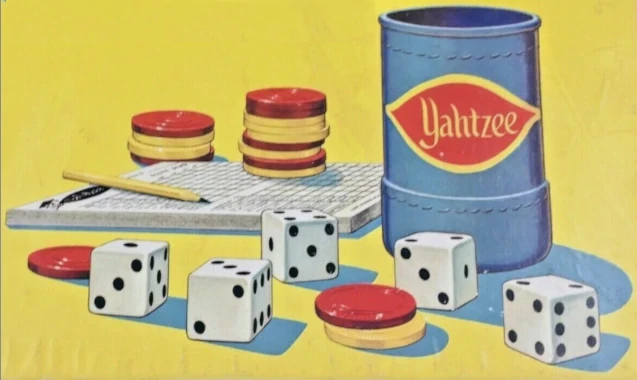
Equipment
A standard Yahtzee game consists of the following equipment:
5 Dice
1 Dice cup or shaker
1 Score pad
Pencils
Yahtzee Bonus chips
How to Play Yahtzee
1. Roll a die to see who starts. If continuing a series of games, the previous game’s winner goes first. Play continues clockwise.
2. Roll up to three times each turn. You may end your turn and record a score after your first, second, or third roll.
3. Fill in one empty box for the corresponding scoring category each turn.
First Roll
Roll all five dice. If you get the exact combo you want, mark your score card right away and end your turn. Otherwise, set aside any “keepers” and continue with your second roll.
Second Roll
Re-roll any or all dice you want, even “keepers” from the previous roll. You don’t need to declare which combination you’re rolling for; you may change your mind at any time. If you get the exact combo you need, mark your score card and end your turn. Otherwise, set aside any “keepers” and continue with your third roll.
Third and Final Roll
Re-roll any or all dice you want, even “keepers” from the previous roll. You must enter a score at the end of this roll, whether or not you like your dice. If your roll doesn’t suit any of your empty boxes, you have to enter a zero somewhere.
Yahtzee Scoring Rules
The Yahtzee score card is split into two sections: the Upper Section for dice face values and Lower Section for the set combinations.
The Upper Section
To score in the Upper Section, add only the dice with the same number and enter the total in the corresponding box. The following roll, for example, could be scored as 12 for Fours, 3 for Threes, or 1 for Ones.

Your goal in the Upper Section is to score a total of at least 63 points - the minimum required to earn a 35-point bonus. The bonus points are based on scoring an average of three of each number: three for Ones, six for Twos, nine for Threes, 12 for Fours, 15 for Fives, and 18 for Sixes. However you may earn the bonus with any combination of scores that total at least 63 points.
The Lower Section
The Lower Section scores the following dice combinations:
| Category | Description | Score |
|---|---|---|
| Three of a Kind | At least three dice showing the same face | Sum of all dice |
| Four of a Kind | At least four dice showing the same face | Sum of all dice |
| Full House | A Three of a Kind and a pair | 25 points |
| Small Straight | Four sequential dice (1-2-3-4, 2-3-4-5, or 3-4-5-6) | 30 points |
| Large Straight | Five sequential dice (1-2-3-4-5 or 2-3-4-5-6) | 40 points |
| Yahtzee | All five dice showing the same face | 50 points (first Yahtzee only) |
| Chance | Any combination of dice faces | Sum of all dice |
Yahtzee Bonus Rules

A Yahtzee Bonus is awarded if you roll more than one Yahtzees. If you roll a second Yahtzee and have already recorded 50 in the Yahtzee box, you receive 100 bonus points. An additional 100-point bonus applies to any subsequent Yahtzees you roll. Put an “X” or check-mark in the Yahtzee Bonus box to indicate this bonus. To finish the turn, you then must enter a score in a regular scoring category according to the Joker Rules (see below). If you’ve already scored a zero in your Yahtzee box, you done messed up and do not receive a Yahtzee Bonus.
Joker Rules
After recording a Yahtzee Bonus, you must score the the total of the five dice in the appropriate Upper Section box. If this box has already been filled, then you score as follows in any open Lower Section box:
3 of a Kind: Total of all 5 dice
4 of a Kind: Total of all 5 dice
Full House: 25 points
Small Straight: 30 points
Large Straight: 40 points
Chance: Total of all 5 dice
If the appropriate Upper Section box and all Lower Section boxes are already filled in, you must enter a zero in any open Upper Section box. That’s right, it is possible to roll a valid Yahtzee, collect your bonus, and still have to take a zero. At least you’ll have an extra one-hundred points to console you.
Ending a Game
Once each player has filled in all 13 category boxes, the game ends. Each player then adds up their score as follows:
Upper Section: Add up the Upper Section scores and enter the total in the Total Score box. Enter the 35-point bonus in the Bonus box if you scored 63 points or more. Then enter the total in the Total box.
Lower Section: Add up the Lower Section scores, and enter the total in the Total of Lower Section box. Add 100 points for each check mark in the Yahtzee Bonus area.
How to Win
After each player has tabulated their Grand Total, the player with the highest score wins!
Additional Notes
1. It is possible that a certain combination can be scored in more than one category; for example, a Full House can be scored in the Full House, Three-of-a-Kind, or Chance categories. A player's individual strategy will help them to decide how to score it. Note that a five-of-a-kind cannot be scored as a Full House.
2. The original Yahtzee rules released in 1956 contain a misprint in the Joker Rules. The booklet stated that additional Yahtzees must be used as Jokers in the Lower Section and does not allow for their use in the Upper Section. This problem was corrected when the game was re-copyrighted in 1961.
Important Yahtzee Terms from the Official Rules
- Roll - The act of rolling the five dice in Yahtzee.
- Re-roll - The act of re-rolling some or all of the dice in a turn.
- Roll Number - Refers to the number of rolls a player has taken in a single turn.
- Turn - Refers to a single round of play in which a player rolls the dice up to three times and records a score.
- Scratch - A term used to indicate that a player has scored in a particular category.
Triple Yahtzee Rules
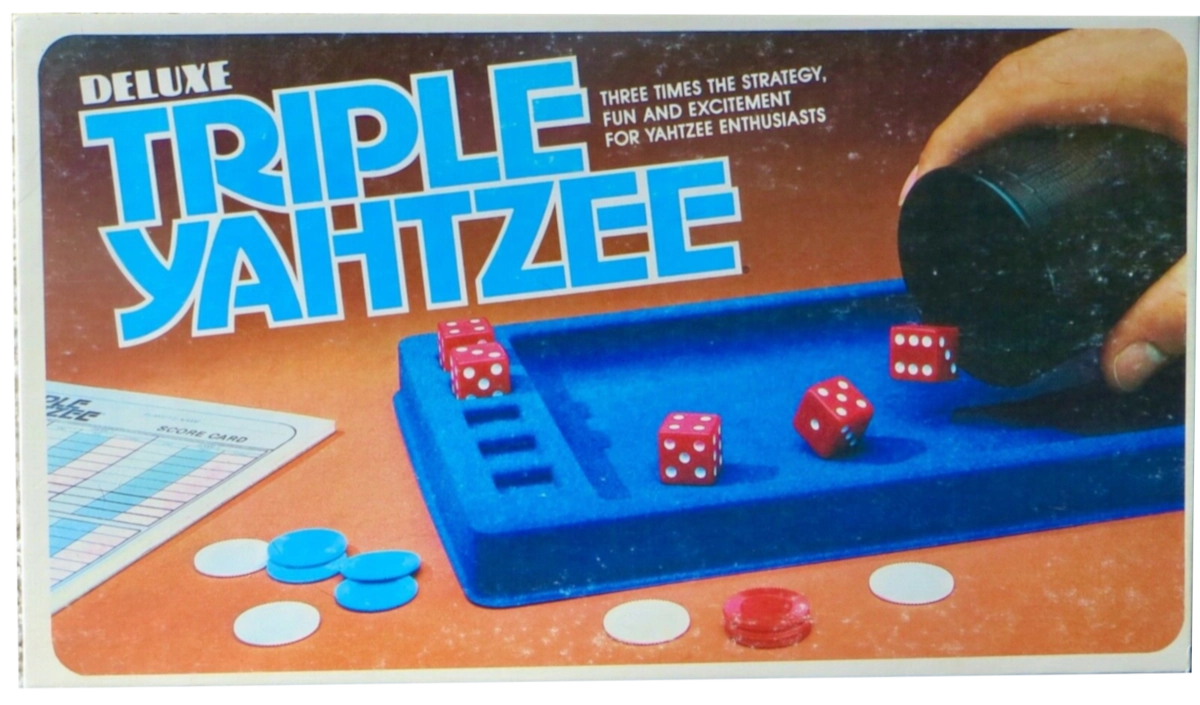
Triple Yahtzee was the original and most popular Yahtzee derivative game. Although Hasbro no longer produces this variation, fans keep the game alive with homemade sets and buying on the second-hand market. It is also one the few Yahtzee variations that has found success as a video game. The rules to Triple Yahtzee are the same as regular Yahtzee except you are essentially playing three games at once, for triple the fun. The official scorecard displays three columns for this purpose, where points can be multiplied to maximize a player’s score. The wonderfully verbose 1978 Triple Yahtzee rules explain the endgame best:
HOW TO TOTAL THE SCORES: The game is completed after each player has filled every box in the three columns with a score or a zero. Add and total of the scores for each column for both the UPPER and LOWER SECTIONS. Then proceed as follows:
1. Add the LOWER and UPPER SECTION totals of each column and enter in "COMBINED TOTAL OF UPPER AND LOWER SECTIONS".
2. Enter the actual "COMBINED TOTAL" of Column 1 in "TRIPLE YAHTZEE TOTAL SCORE". Double the "COMBINED TOTAL" of Column 2, triple the "COMBINED TOTAL" of Column 3 and enter these totals in "TRIPLE YAHTZEE TOTAL SCORE".
3. Add the totals of the three columns and enter in "GRAND TOTAL" box.
4. Record the "GRAND TOTAL" on the back of the score card. Add YAHTZEE BONUS CHIPS you have earned and record final total of game.
STRATEGY: In formulating your game plan you must keep in mind that the highest scores should be posted in the third column which is tripled in point value at the end of the game. Similarly, the next higher scores should be posted in the second column which will be doubled in point value at the end of the game. The first column should be used for the lowest scores wherever possible. In order to attain the highest total score, shrewd judgment should be exercised as to the choice of columns for posting each score.

More Yahtzee Rules
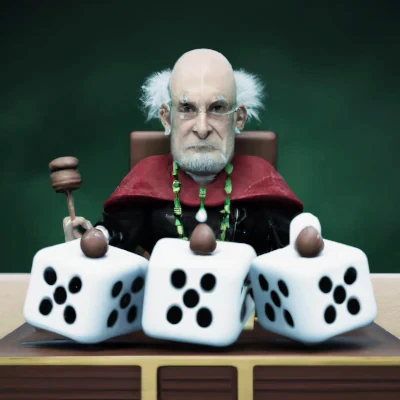
The Yahtzee Manifesto is a comprehensive online resource dedicated to the beloved dice game of Yahtzee. Whether you're a seasoned player or just starting out, The Yahtzee Blog is the perfect place to learn about the rules, strategies, and finer points of Yahtzee. With a focus on in-depth analysis, expert insights, and user-friendly tutorials, the Yahtzee Manifesto is an indispensable guide to the game.
From the basics of Yahtzee scoring to the more advanced techniques of Yahtzee strategy, the Yahtzee Manifesto covers everything a player needs to know to master the game. Whether you're looking to improve your own skills, or simply want to gain a deeper understanding of the rules of Yahtzee, the Yahtzee Blog is the place to start. With a wealth of information available, and a community of passionate Yahtzee players, the Yahtzee Manifesto is the ultimate resource for anyone looking to elevate their game and become a true Yahtzee master.

Yahtzee Rules FAQ

Are you a beginner just learning how to play Yahtzee? Studying the official Yahtzee rules is a great place to start. Frequent Yahtzee players know the game like the back of their proverbial hands. Or so they may think. Overconfidence or presumptions of privilege can cloud even the most ardent player’s mind. Because of the near-infinite possibilities in a single game, long-time rollers will eventually come across a situation that just isn’t covered in the official rules of Yahtzee. But don’t despair - just check out the Yahtzee FAQ:
Frequently Asked Questions - Yahtzee Rules
-
This is the most-asked question in Yahtzee and the most misunderstood rule. Ever since a typo in the original 1956 Yahtzee set omitted all mention of the situation, rolling more than one Yahtzee has confounded rollers for decades.
Rolling multiple Yahtzees invokes what is known as the Bonus Yahtzee Rule and grants the player a 100 point reward for each extra Yahtzee. The player then records a score according to the Joker Rules, which mandates taking it in the Upper Section if the given number remains unscored. Otherwise the player may use the dice as a wild card in the Lower Section.
This often leads to the second most-asked question: -
It’s a major bummer but entirely possible to score a zero after rolling a second Yahtzee. When it is late in the game and there aren’t many open scoring categories left, a player can easily be forced into this bittersweet result. If all of the Lower Section boxes are already filled, for example, the player is required to take it Upstairs. If the number in which the Yahtzee was rolled has been scored there, the result is a zero. The 100 Bonus Points, however, are always awarded so a player in this situation will certainly not leave empty-handed.
-
Yahtzee relies on the concept of randomness. Dice, after all, are the world’s original random number generator. So luck will always form one of the game’s foundational pillars. But the important role that chance plays in Yahtzee can sometimes obscure its many other facets. Skill, karma, organization, and strategy are all equally-important fundamental Yahtzee concepts.
The PROVEN Yahtzee strategy is one the most successful systems for maximizing a player’s potential. Developed by legends of the Yahtzee Pro Circuit, Park Hee-Soo and Claude Jenkins, PROVEN is a set of principles that can help guide your game to another level:
Prioritize the Upper Section Bonus - The Upper Section’s 35-point bonus is the second most important objective in a game of Yahtzee, behind only the five-of-a-kind itself.
Remain Adaptive – Achieve success by remaining open to new possibilities.
Organize - A well-managed approach to Yahtzee will benefit players of all levels. Choose a strategy early and keep your head in the game at all times.
Value the Yahtzee – It’s the name of the game. Keep it open on your scorecard for as long as possible.
Embrace Eventualities - Ones and Chance are the safe havens of the Yahtzee scorecard. Use them wisely to keep your head above water.
Never Back Down - Take control of the dice and stand up for your Yahtzee rights. -
An encounter with a tie game is inevitable for a long-term player. The official Yahtzee rules don’t address the subject so it remains the responsibility of the game host to develop a plan for dealing with ties. It will depend on each unique situation, but in most cases a tied game should pose no problem. This is particularly true in series play where the sum total of several games determines the outcome. In this case, a tie in a single match doesn’t matter and will stand as it was rolled. In a sudden-death tournament match, however, a tie will need to be broken.
You can break a tie in Yahtzee in a number of ways. The simplest method is for each player to roll a single die where the highest number wins. Or roll all five dice and use the highest Chance score to settle it. The most used tie-breaker in tournament play involves rolling up to three times in a single turn and using the best result as the determinant. -
Under standard rules, the highest possible Yahtzee score is 1575 points. The player needs to roll 13 consecutive Yahtzees, many of which must be in a given number, earning hundreds of bonus points in the process. The Upper Section would be maxed out with five Yahtzees for 105 points before bonuses.
The lowest possible score is five points. In this scenario, the player would roll a zero in every category except for Chance where she scores five Ones. The odds of rolling either the maximum or minimum grand totals are exceedingly small. -
To score a legal Full House, the player must roll three dice of one number and two dice of a different number. Five-of-a-Kind is a Yahtzee, not a Full House.
-
That depends on what your definition of good is. The centered player will find joy in even the lowest score. But statistically speaking, a capable player will score 250 points in roughly half of all games. High rollers who don’t have to score a zero for any category can land comfortably above 300. True high score aspirants can dream of rolling 500 points or more – it happens in less than 1% of all games.
-
Yahtzee’s inventor, E.S. Lowe, claimed that he got the idea for the game in the early 1950’s from a wealthy Canadian couple who played dice while sailing around the world on a yacht. So the name is a play on the type of boat upon which the game was created. But the couple have never been publicly identified and their absence remains a mystery to this day. This leads many to suspect that Lowe’s story was nothing more than a marketing gimmick, seeking to lure in customers with fantastic tales of board games from exotic locales like Canada.
Some experts doubt that Yahtzee was created either by Lowe or a random Canadian couple, but that it shares a common origin with the ancient dice game “Ya-Tsee”. This suggests a much more distant origin and gives rise to the possibility that 20th century gaming executives appropriated a sacred ancient ritual to amuse the middle class. Like the game itself, the etymology of Yahtzee is multilayered and aloof. Research into the matter is ongoing but we may never uncover the whole story. -
Game designers have put a lot of thought and effort into creating the perfectly balanced masterpiece that is Yahtzee. But some players choose to spit the face of fair play and use dirty tricks to succeed. Is your opponent willing to break the rules? Come to the table prepared. Here are the top six ways to cheat at Yahtzee:
 Con Job: A player may hustle their way into a game posing as a know-nothing bumpkin to catch their opponents off guard. A simpleminded demeanor and friendly countenance can lull players into a false sense of security. In fact, the Yahtzee predator is preparing to pounce. The con artist uses this ruse to gain a psychological advantage before the first dice are ever rolled, resulting in a relaxed atmosphere where additional cheats stand a greater chance of success.
Con Job: A player may hustle their way into a game posing as a know-nothing bumpkin to catch their opponents off guard. A simpleminded demeanor and friendly countenance can lull players into a false sense of security. In fact, the Yahtzee predator is preparing to pounce. The con artist uses this ruse to gain a psychological advantage before the first dice are ever rolled, resulting in a relaxed atmosphere where additional cheats stand a greater chance of success.
 What's That?: One of the most basic cheating methods is the time-tested attempt at getting your opponent to look away from the gaming table so you can tamper with the game state or equipment. This is typically deployed with a sudden exclamation to the effect of, "Holy cow, what's that behind you!?" While your opponent's back is turned, a cheater could alter the outcome of their roll or even swap in substitute dice to misalign their balance. While it may not seem reasonable that a seasoned player would resort to such childish behavior, a cheating mind is liable to plumb such depths in their desperation.
What's That?: One of the most basic cheating methods is the time-tested attempt at getting your opponent to look away from the gaming table so you can tamper with the game state or equipment. This is typically deployed with a sudden exclamation to the effect of, "Holy cow, what's that behind you!?" While your opponent's back is turned, a cheater could alter the outcome of their roll or even swap in substitute dice to misalign their balance. While it may not seem reasonable that a seasoned player would resort to such childish behavior, a cheating mind is liable to plumb such depths in their desperation.
 Dice Manipulation: The ideal set of dice exist in a state of equilibrium where each face has a perfectly equal chance of coming up on any given roll. But outside of a casino or a professional Yahtzee tournament, such a high level of craftsmanship is rare. The standard Yahtzee set from the local toy store includes a lower quality dice where the balance is not exact. This surely works against the notion of random number generation but its effects tend to equal out as all players use the same dice for every turn.
Dice Manipulation: The ideal set of dice exist in a state of equilibrium where each face has a perfectly equal chance of coming up on any given roll. But outside of a casino or a professional Yahtzee tournament, such a high level of craftsmanship is rare. The standard Yahtzee set from the local toy store includes a lower quality dice where the balance is not exact. This surely works against the notion of random number generation but its effects tend to equal out as all players use the same dice for every turn.
A cheater who is skilled in the art of distraction is able to insert and remove crooked dice from play at will. This so-called “dice mechanic” can slip in a loaded die to guarantee the six they need for their next Yahtzee but then extract it before the next player rolls. Techniques such as the “Mouth Switch”, where a player uses a pretend cough or sneeze to mask a die swap, or the “Casino Thumb Palm Dice Switch”, an adept illustration of sleight of hand, have been perfected by craps players in casinos worldwide. These routines, therefore, are at the ready for a would-be Yahtzee fraudster.
 Fake Roll: The fake roll is a discreet illusion, carefully play-acted by the roller to portray the appearance of randomized dice while they remain in a fixed position of their predetermined choosing. These types of trick rolls are often described by their perpetrators as “honest cheating”, in the sense that they require a high level of skill to pull off. But to even associate these techniques with the concept of honesty only accentuates the depths of their depravity.
Fake Roll: The fake roll is a discreet illusion, carefully play-acted by the roller to portray the appearance of randomized dice while they remain in a fixed position of their predetermined choosing. These types of trick rolls are often described by their perpetrators as “honest cheating”, in the sense that they require a high level of skill to pull off. But to even associate these techniques with the concept of honesty only accentuates the depths of their depravity.
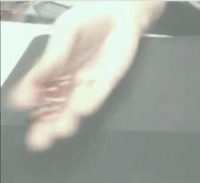 Rhythm rolling is a popular concept amongst Yahtzee cheaters, but its reliability remains highly dubious. The technique involves the player taking advantage of precise, repeatable movements to control the movement of the rolled dice. In such a setup, the player ensures that the dice remain in a particular formation, whether in the hand or cup. Followed by a well-trained rolling movement, the idea is to exert absolute control over the dice’s trajectory and alignment to reliably convert the desired face.
Rhythm rolling is a popular concept amongst Yahtzee cheaters, but its reliability remains highly dubious. The technique involves the player taking advantage of precise, repeatable movements to control the movement of the rolled dice. In such a setup, the player ensures that the dice remain in a particular formation, whether in the hand or cup. Followed by a well-trained rolling movement, the idea is to exert absolute control over the dice’s trajectory and alignment to reliably convert the desired face.
Due to the lure of financial windfall that accompanies the perfection of dice manipulation, a booming cottage industry has sprouted up around educating the next generation of dice cheaters. Millions of dollars are made teaching the skills but the results are questionable. The success of a fake roller is oftentimes only in their own heads.
 Extra Roll: It is not uncommon for a Yahtzee player’s focus to drift during an opponent’s turn. Perhaps they begin to add up their score, plan their strategy for their remaining rolls, or chat with the other players. Not only is this poor etiquette, it opens the door for a cheater to exploit their distraction. If their counterparts’ attention is wandering, a dishonest player can attempt to roll the dice for a fourth time during a single turn. More often than not, the subterfuge will pass unnoticed.
Extra Roll: It is not uncommon for a Yahtzee player’s focus to drift during an opponent’s turn. Perhaps they begin to add up their score, plan their strategy for their remaining rolls, or chat with the other players. Not only is this poor etiquette, it opens the door for a cheater to exploit their distraction. If their counterparts’ attention is wandering, a dishonest player can attempt to roll the dice for a fourth time during a single turn. More often than not, the subterfuge will pass unnoticed.
This tactic becomes even more likely to succeed if the players are under the influence of alcohol or other mind-altering substances, a common occurrence in casual games. If questioned, a drunken “Hey that was only my second roll, right?” can provide cover as an innocent mistake, or serve to legitimize the illicit fourth roll.
 Math is Hard: Using creative addition to tally one's final score is one of the simplest ways to cheat at Yahtzee. Players who do not relish the task of calculating their total scores at the end of the game are typically not willing to do even more math to check an opponent’s tally. This lack of oversight leaves a wide latitude for Yahtzee cheaters to doctor their official scorecard. A player may choose to score Large Straights as 45 points, for example, as a way to pad his total. But if they truly believe no one is watching, the cheating may be even more egregious.
Math is Hard: Using creative addition to tally one's final score is one of the simplest ways to cheat at Yahtzee. Players who do not relish the task of calculating their total scores at the end of the game are typically not willing to do even more math to check an opponent’s tally. This lack of oversight leaves a wide latitude for Yahtzee cheaters to doctor their official scorecard. A player may choose to score Large Straights as 45 points, for example, as a way to pad his total. But if they truly believe no one is watching, the cheating may be even more egregious.
The most common method of unintentional Yahtzee cheating is bad math. So the scorecards of even well-intentioned and trusted players should be scrutinized for accuracy. Coincidentally, Yahtzee is a great way to teach math to children (or adults). -
There have numerous works of literature about Yahtzee, going back hundreds of years. Some researchers believe that passages in the I-Ching reference an early version of the game. Yahtzee has been featured in novels, instructional guides, strategy books, technical manuals, poems, comic books, and other forms of print media. Here’s one of our favorite haikus:
dice cacophony
anticipation rattles
sowing a yahtzee
But you’re probably thinking about Yahtzee experts Rick McCallister and Louise Proctor. In collaboration with the World Yahtzee Institute Press, the duo published The Yahtzee Manifesto in 2011 to raise Yahtzee awareness in a changing 21st century world. The book covers the Yahtzee basics, including strategy, tips, and higher concepts. Rick, Louise, and the entire team at the WYI remain committed to providing you with only the finest Yahtzee propaganda. -
In Yahtzee, a player does not have to roll the dice three times. While they can roll the dice up to three times, they can choose to end their turn after one or two rolls if they are satisfied with the dice they have.
-
A game of Yahtzee requires five dice.
-
Start with the Yahtzee rules and score card - these contain everything you need to know. Then check out The Yahtzee Manifesto for a more in-depth analysis of the game.
-
Yahtzee was first released in 1956 and thrives today in a digital world - it shows no signs of slowing down. But a game of Yahtzee ends after each player has completed their 13th and final round. Then it's time to tally the final scores and declare a winner.
-
No, it is not possible to get an extra roll or turn in standard Yahtzee. There are some possible exceptions, such as to break a tie or re-rolling a die that has rolled off the playing surface. Score all subsequent Yahtzees under the Yahtzee Bonus Rules.
-
Yahtzee is produced by Hasbro, one of the largest toy and game companies in the world. It was originally released in 1956 by the E.S. Lowe Company and sold to Milton Bradley in 1973 which then became a part of Hasbro in 1984.


